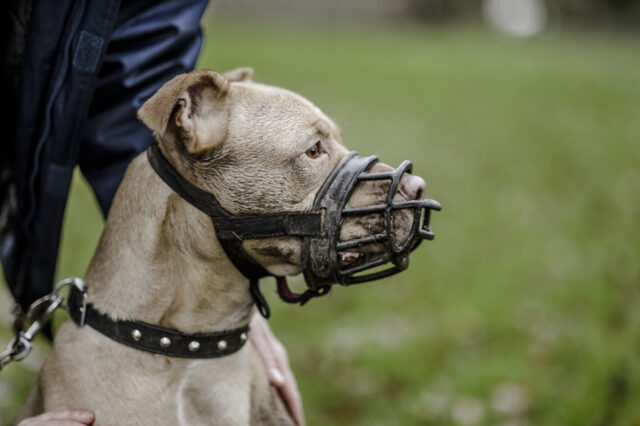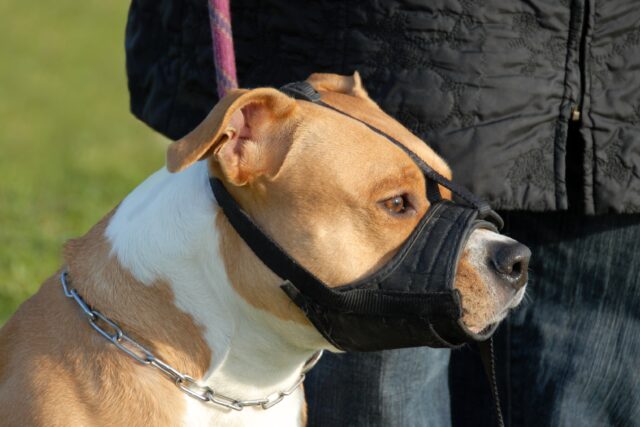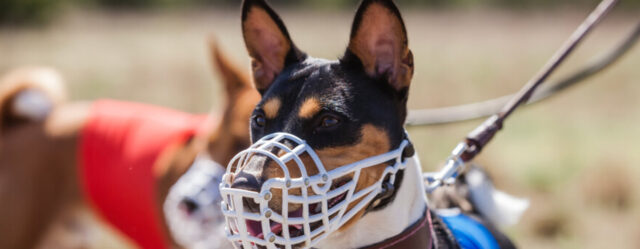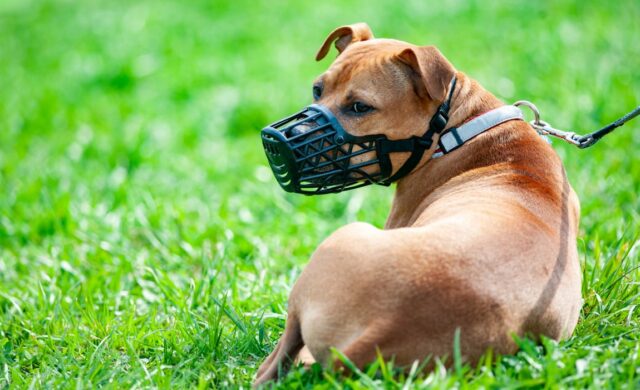
Dogs are one of the most popular types of pets. This stems from dogs being part of our household for thousands of years. Although their ancestors were mostly kept around for hunt and guard duty, today’s dogs often find themselves in a role of a companion. However, while they may behave with us around or in house conditions, they aren’t guaranteed to remain nice in other situations. A dog getting aggressive towards other dogs while on a walk or even attempting to bite a pedestrian are situations that we would prefer to avoid. These situations usually have people resort to muzzles as a method of training. But is this approach functional in reducing aggression or is muzzle’s use misinterpreted? Read down below to find out.
Why muzzles are used

The reasons why somebody would use a muzzle on their dog are numerous. You may be in a situation yourself so it’s best we cover the utility of the muzzle for the sake of a better understanding of its effects.
The proper way to use muzzles is by conditioning your dog to wear them. Starting at an early age is a smart idea. The dog will have more time to get used to it and feel comfortable wearing a muzzle. The muzzle should also not be used too often as prolonged use, outside of necessary situations, may cause issues for the dog. They could also refuse to wear it again if this long-term use occurs repeatedly.
If your dog is easily disturbed or shows signs of anxiety putting a muzzle on during situations that provoke them is not only helpful but also shows your responsibility as a dog owner. This anxiety can crop up during vet visits. It’s not rare for dogs to feel uneasy in these spaces especially if it’s their first time going there. The unknown area that has scents of all the other animals is already confusing enough for our furry friends. When you add needles and other veterinary tools into the mix it becomes very easy even for the friendliest of dogs to lash out due to confusion and anxiety. Putting a muzzle on during vet visits is recommended, you never know when something distressing to your dog can occur. It’s not only for the sake of preventing them from biting the vet or yourself during visits, it’s also for their own protection.
With anxious dogs, a muzzle is recommended with a few important conditions to fulfill. The first one, and the one you should keep in mind every time you purchase a muzzle, is to get a size that comfortably fits your dog. The second one is to never use more uncomfortable muzzle types for longer durations. These include muzzles such as occlusion muzzle which shuts the dog’s mouth completely preventing them from any movement. Said muzzle and similar styles shouldn’t be used during hot weather at all unless it’s a dire situation like an emergency vet visit. Dogs cool themselves by panting so restricting their ability to do so may cause health issues to your dog. Check out the appropriate muzzles for appropriate situations on kuoser, which offers a slew of choices for any breed of dog.
The use of muzzles on aggressive dogs follows similar principles. But in the below category we will elaborate on its utility in this department more.
Do muzzles help with aggression?

People will sometimes use a muzzle only if the dog becomes dangerously aggressive. This aggression doesn’t stop just because a muzzle is put on and it can get worse if the dog isn’t properly muzzle trained. The frustration the muzzle offers may make the dog more likely to attack. While it can’t bite, the dog can still butt into others with its muzzle, claw at them, lunge, bruise, and injured in other ways.
Wearing a muzzle is supposed to prevent dogs from biting in surprising, distressing situations. It can also be used as a measure of security when taking the dog to a vet or a groomer. However, a muzzle isn’t able to correct a dog’s behavior. An aggressive dog needs proper training, not just a muzzle. As we’ve already said, a muzzle can even make them more disturbed.
Training may also help you learn why a dog is acting this way. The behavioral issues have some reasoning behind them that can help you aid your dog with behaving better. This can be due to the dog’s anxiety. It can be general anxiety, shelter dog anxiety, or any other type that could provoke this bad behavior. Dog anxiety has as many different types of treatment as it does variations, it’s best to consult professionals on ways you can help the dog out. Sometimes this will be done in the simplest way of avoiding situations that trigger their anxiety. Reducing their overall distress. The muzzle will still be used in some dog training procedures, for the safety of both dogs and the trainer, but they are usually removed as the dog gets trained better. A muzzle can also help with anxiety in some cases but these are niche situations rather than general advice.
To reiterate, using muzzles on aggressive dogs doesn’t help their aggression and may disturb them more. Dogs that have behavioral issues require training and proper care. If your dog shows signs of aggression it’s counterproductive to lock them in a muzzle.
Conclusion

Relying on muzzles to train your dog simply doesn’t work. There are also cases where owners use uncomfortable or unsuitable muzzles for their dogs, causing more harm to the pet. Just as any treatment, the treatments for dog aggression and dog anxiety require a lot of care from their owner. Just because a training session is over it doesn’t mean your responsibility is. Constantly condition the dog with treats and rewards when they show proper behavior. Give them enough reassurance with petting and relaxation to make them feel more comfortable in certain areas. However, be careful not to disturb them more because they may end up lashing out. Lastly, identify the triggers of their anxiety as avoiding those situations will make your dog that much happier.












